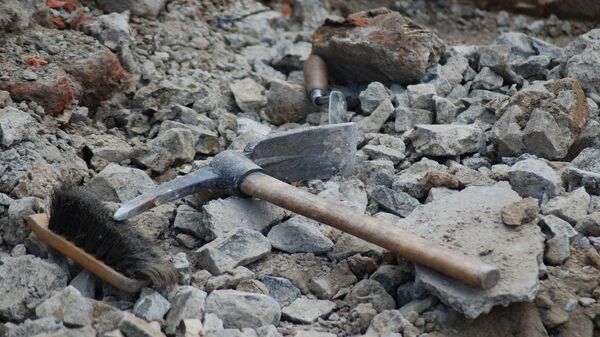The mummy, which has been dated back to the Greco-Roman era, was found by a joint Egyptian-Russian archaeological mission working at the Deir al-Banat site in Egypt's Fayoum governorate.
Preserved in linen wrappings, the mummy's head is covered by a burial mask made out of cartonnage — papyrus strips that are tightly glued over one another to form funerary masks.
Painted in the traditional colors of blue and gold, the mask is also decorated with a scene depicting Khebr, the pharaonic god of the sky. On the mummy's chest is a painting of Isis, one of the oldest goddesses of Ancient Egypt. Beneath its feet is a drawing of a white sabot, according to the ministry's press release.
Though the mummy itself is still intact, the same could not be said for the wooden coffin it was housed in. According to excavators, the coffin is broken in several places and any inscriptions that may have offered details on the dead are no longer visible.
Mohamed Abdellatif, assistant to the minister of antiquities and the head of the Coptic and Islamic Antiquities Sector, said in a statement that emergency conservation work had to be done in order to preserve the mummy before it was to be transported to a storage area in Fayoum. Once transported, the ancient find would be subjected to further examinations.
The Russian mission, headed by Galina Belova, is affiliated with the Russian Institute for Oriental Studies.
This is just the latest find by archaeologists working in Egypt. Researchers have also recently discovered a 2,300-year-old gymnasium and a mysterious "void" inside the Great Pyramid of Giza.


